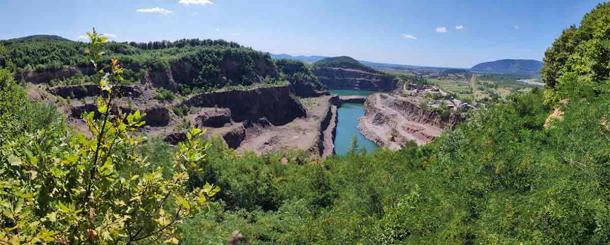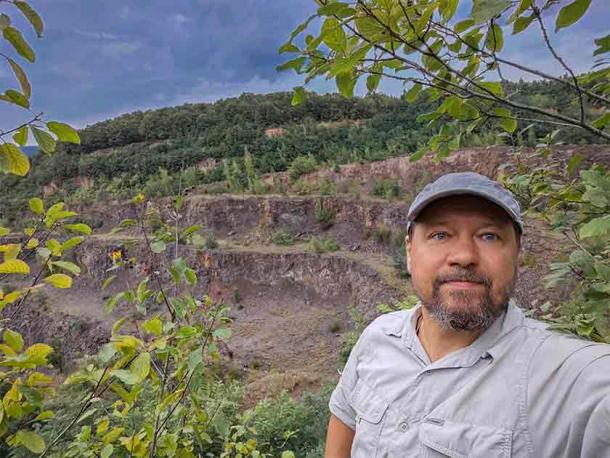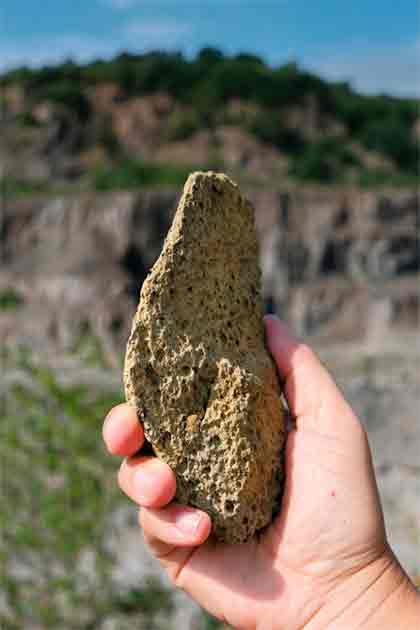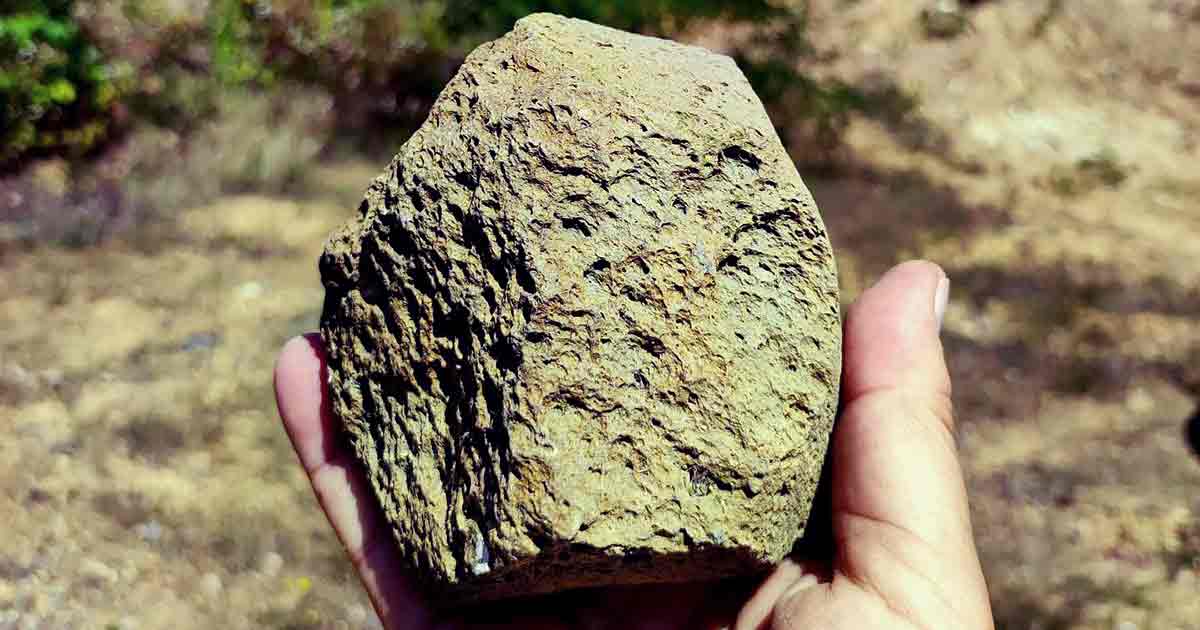Paleolithic Tools Prove Hominins Were in Europe 1.4 Million Years Ago
After five decades of speculation about their true origin, ancient stone tools removed from the archaeological site of Korolevo in western Ukraine have been successfully dated for the first time. After completing an analysis of the sediment level where the tools were found, a team of archaeologists affiliated with the Czech Academy of Sciences discovered that the stone tools were approximately 1.4 million years old, which places them in the Middle Pleistocene epoch of the Paleolithic period.
These tools would have been made by ancient hominin human ancestors, who were descended from even more ancient hominins who’d lived in Africa before migrating into the lands of Eurasia approximately two million years ago.
- 700,000-Year-Old Tools Found in Greece Rewrite History
- Skulls in Ukraine Reveal Early Modern Humans Came From the East
“Korolevo represents, to our knowledge, the earliest securely dated hominin presence in Europe,” the Czech archaeologists wrote in a paper just published in the journal Nature. Referring to other discoveries of other hominin sites dating to the Pleistocene and Paleolithic, the archaeologists stated that Korolevo “bridges the spatial and temporal gap between the Caucasus (around 1.85 to 1.78 million years ago) and southwestern Europe (around 1.2 to 1.1 million years ago).”
It seems that human ancestors (hominins) first arrived in eastern Europe (Ukraine) about 300,000 years after they settled in the Caucasus Mountain region of Asia, and about 300,000 years before they reached the far edges of western Europe. This shows that prehistoric migration patterns carried ancient humans from Asia to Europe, and not in the other direction. Thanks to this work, the timeframe of the earliest Pleistocene migrations has been pinned down more accurately than ever before.

View from Gostry Verkh of Korolevo quarry with Korolevo II site (behind water body) where the Paleolithic tools were discovered. (Roman Garba / Nature)
How Cosmic Rays Helped Archaeologists Trace Ancient Human Migrations
Located close to Tysa River in the eastern Carpathian Mountains, Korolevo is a multi-level archaeological site found inside an andesite quarry. Since its discovery in 1974, excavations at Korolevo have produced a wealth of stone tools and other artifacts, revealing the site’s importance as a home for early Eurasian hominins who occupied territories north of the Alps.
Looking to crack the mystery of the exact time when these artifacts were made, the team of Czech scientist, led by archaeologist Roman Garba, used a sophisticated dating method that relied on the rate of decay of cosmogenic nuclides trapped in the sediment layers where the Korolevo artifacts were found.
Cosmogenic nuclides are created during the interactions of cosmic rays from deep space and atoms in earth’s atmosphere. Once they’re absorbed into the earth’s soil these nuclides tend to break down over time at a steady and predictable pace. By comparing nuclide levels in ancient sediments with those in more recent deposits, it is possible to date an ancient sediment layer quite accurately—and, by extension, to date any human artifacts or remains that might be found there.
The ratio of these nuclides still present in the soil at Korolev in eastern Europe proved that the stone tools found there were about 1.4 million years old. This date aligns nicely with the suspected movements of human ancestors across the landscapes of Middle Pleistocene Eurasia.
“Our findings advance the hypothesis that Europe was colonized from the east, and our analysis of habitat suitability suggests that early hominins exploited warm interglacial periods to disperse to higher latitudes and relatively continental sites—such as Korolevo—well before the Middle Pleistocene Transition,” the study authors conclude in their Nature paper.
As a part of their research, the Czech archaeologists tracked climate changes in Eurasia dating back two million years. This allowed them to link the arrival of hominins in the lands of modern-day Ukraine with specific periods of temperature fluctuations.
Changes in environmental conditions associated with waxing and waning glacial periods were a prime factor in determining migration patterns in ancient times. When temperatures were declining, hunter-gatherer groups would have needed to move toward warmer locations. This is because herds of animals would have been more plentiful and vegetation would have grown more easily.

Lead author of the study Roman Garba at Korolevo I. site. (Roman Garba / Nature)
Tracking the Tremendous Travels of a Restless Prehistoric People
Researchers had previously been able to trace the movements of ancient hominin migrants out of Africa and into the Caucasus region, in the far-off northeast. Artifacts found in Jordan’s Zarqa Valley dating to 2.5 million years ago showed that these early migrants had originally traveled along the Levantine corridor, a narrow strip of land in western Asia that connects northeastern Africa with the deserts of the Levant and Mesopotamia (the modern-day Middle East).
From Mesopotamia some of them would have ventured northward, arriving in the Caucasus several hundred thousand years later. Archaeologists unearthed hominin cranial remains and stone tools at a site near Dmanisi, Georgia in the latter region, and it was these discoveries that were dated to 1.85 to 1.78 million years ago.
- Is Archaeology Getting it Wrong? ‘Ancient Stone Tools’ Accidentally Made by Modern Monkeys
- The First Teacher? Study Finds Teaching and Tools Evolved Together
In the meantime, stone tools and fossilized hominin remains found at two caverns in southwestern Europe—at Sima del Elefante (Pit of the Elephant) in Atapuerca, Spain, and Vallonnet Cave in southern France—showed that human ancestors had settled in Europe approximately 1.2 million years ago. This left a gap of about 600,000 years between the settlements of the two Eurasian regions. It is this gap that the dating of the Paleolithic tools found in western Ukraine has helped to fill.

Stone Paleolithic tool possibly from Layer VII at Korolevo I. (Roman Garba / Nature)
The sites in Georgia in the Caucasus and southwestern Europe are separated by more than 3,000 miles (5,000 kilometers) as the crow flies, which reveals the epic nature of the journey that took migrants from one region to the other over the course of several hundred thousand years. The dating of the hominin artifacts found in Korolevo to 1.4 million years ago reveals at least one of the routes migrants followed once they left the Caucasus to look for greener pastures, which would have led them north along the eastern coast of the Black Sea and then westward into Europe toward the lands of modern-day Ukraine.
The Czech researchers acknowledge that Pleistocene epoch migrations from the Caucasus westward to Europe likely followed more than one path. Future excavations at prehistoric sites in Asia and Europe may unearth artifacts related to these other migrations. But for now, at least some of the footsteps of the ancient humans who ventured from Africa into Asia and later into Europe can be retraced far more accurately than in the past.
Top image: Stone Paleolithic tool possibly from Layer VII at Korolevo I. Surface find. Source: Roman Garba / Nature
By Nathan Falde

















